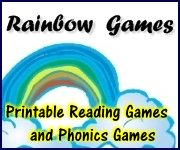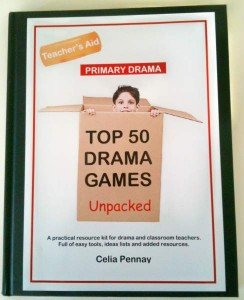Finding a Voice in Writing
Helping Your Students Put Their Passion to Paper
Finding a voice in writing can be the most delightful aspect of the six trait writing process to teach! Voice is that magical quality that makes a creative writing idea sing! Sparkling, confident, undeniably individual. These adjectives describe a page of writing with voice. Voice is the author's passion shining through the language. It's what keeps us as readers lost within a story long after bedtime. It's what makes an essay about tree toads fascinating, even though we didn't think we cared all that much about tree toads.
Sparkling, confident, undeniably individual. These adjectives describe a page of writing with voice. Voice is the author's passion shining through the language. It's what keeps us as readers lost within a story long after bedtime. It's what makes an essay about tree toads fascinating, even though we didn't think we cared all that much about tree toads.
Helping students become aware of their voice in writing couldn't be more easier or more rewarding. When students are excited about an upcoming event, frustrated by a difficult task, or curious about an unfamiliar topic, point out that their voice is showing. A simple comment such as "I can tell from all the pictures you've drawn of marine animals that you're looking forward to the aquarium visit", goes a long way toward confirming that a student has what it takes to express a voice in writing.
You know voice is working when it springs from a page with energy and credibility, shouting, "Look at me! I'm writing about what I know and care about!" And you know it when you connect to the writer: "That story sounds so much like Aimee! I'd recognize her voice anywhere!"
When helping your students find a voice in writing, keep in mind the following creative writing tips:
- Affirm your students' signs of voice when expressed in different media: colorful, highly detailed drawings; illustrated faces with emotions; action verbs; vivid descriptions, and so on.
- Demonstrate how voice makes a difference. Read passages aloud in monotones and expressive voices. Compare the readings and discuss the implications for writing.
- Ask your students to describe the voices in a variety of books. Fine tune their eyes and ears to the voice trait of the six trait writing process.
- Help students see how voice is present in daily life, through pictures, signs, and speech.
- Draw heavily from the arts. Distinctive voices abound in paintings, songs, poetry, and plays.
- Encourage kids to take risks when they write. Praise them for not taking the easy road ("I like my cat."), but reaching for the vivid ("My cat is the purr-fectly people pleasing social activities director in our house.").
Below are some favorite classroom-tested activities for helping your students develop voice in writing.
Finding a Voice in Writing: Hands-on Activities to Develop the Voice Trait
 Puppet Voices. Distribute a selection of simple puppets. Using favorite readers' theatre scripts, ask students to create the "just right" voice for each of the characters.
Puppet Voices. Distribute a selection of simple puppets. Using favorite readers' theatre scripts, ask students to create the "just right" voice for each of the characters.
The Voice of the Minute. Create a list of various "mood voices"- amused, scared, silly, angry, whiny, sad, frustrated, tired, and so on- and write each one on a card. Flash the "sad" card, for example, and ask students to converse in a "sad voice" for a full minute. When time is up, ring a bell or buzzer, and display a different voice card. Rotate through at least five cards and then discuss with your students what was difficult about using one voice at a time. Explain that a writer switches voices as a creative writing idea develops and the purpose for writing changes.
Whose Voice Is It? Give a student a statement to read, such as "I can't believe I won the tournament!" and a voice descriptor such as exuberant. Ask the student to read the line aloud in that voice. Have classmates guess the voice until they guess the descriptor correctly or a synonym for it, such as thrilled. Then choose another student to read a new statement guided by a new descriptor. Continue with new sentences, trying different voices, until everyone has had a turn.
Matching the Voice in Writing to Purpose
Understanding the purpose behind a piece of writing is key to choosing the right voice. A thank-you note expresses gratitude, appreciation, and affection. A letter of complaint channels a voice of frustration, disappointment, or anger. In the activities below, your class will explore the relationship between purpose and voice in writing and discover the importance of these emotions beneath the surface of the page. Write Me a Letter. As a class, brainstorm on the board a list of letters and notes that people might write, as well as their intended audiences and appropriate voices. Here are examples:
Write Me a Letter. As a class, brainstorm on the board a list of letters and notes that people might write, as well as their intended audiences and appropriate voices. Here are examples:
- a thank you note/a relative/grateful
- a fan letter/a celebrity/adoring and flattering
- an invitation/a friend/welcoming
Voice a la Mode. List the following modes of writing on the board with their respective definitions:
- narrative: realistic storytelling
- descriptive: showing a person, place, or thing in vivid language
- expository: explanations and information
- persuasive: convincing someone of an idea or attempting to change his or her viewpoint
- imaginative: fanciful storytelling
With your class, brainstorm how a topic might be approached according to the five modes. Suppose the topic is sports. One might write a realistic story about a championship game (narrative), explain how to play a sport (expository), invent a fantasy sport (imaginative), describe a moment playing a sport (descriptive), or convince a teacher to schedule more time for organized sports (persuasive). Next, determine the voice one would likely use for such pieces. For example, an imaginative story about an invented fantasy sport would carry a voice of whimsy and excitement. Encourage each student to select a topic and mode and write a piece in an appropriate voice.
Discovering a New Voice in Writing
Once your class discovers the importance of finding and using the right voice for the right purpose, try these activities to engage them in voices they may not consider on their own:Choices of Voices. Display a simple statement such as, "Close the door, Johnny." As a class, discuss who might use this line, such as a brother, father, or friend. Ask for volunteers to read the line in the voice of one these persons:
- brother: bratty or whiny
- father: firm
- friend: kind or casual
Discuss how voice takes on different qualities, depending upon who is speaking and the relationship to the person receiving the message. Connect this idea to the importance of using the right voice in writing.
 Musical Voices. Play a selection of instrumental or classical music and have students draw what they hear. Then discuss the different "voices" that came through the music, such as "playful", "energetic", "relaxing", and so on.
Musical Voices. Play a selection of instrumental or classical music and have students draw what they hear. Then discuss the different "voices" that came through the music, such as "playful", "energetic", "relaxing", and so on.
Opposites Attract. Have individual students pantomine opposite pairs of emotions, such as happy/sad, interesting/boring, silly/serious, and so on. Discuss together how emotions can affect voice in writing.
The voice you seek to develop in your students' writing sizzles and sparks from the starting gate. It draws readers in tight, refusing to release them until the last sentence. It's honest, unique, authentic. Showing your students that they have valued things to say is the first step. The second step is teaching them how to say it so that it echoes with the reader. Every student has a voice. Now let's draw it out and celebrate it in fresh, original language!
Return from Voice in Writing to Creative Writing Tips
Return from Voice in Writing to Creative Writing Ideas and Activities
Helping You Write Across the Curriculum!
copyright 2009-2013 www.creative-writing-ideas-and-activities.com
Our Most Popular Pages
5. Writing a Personal Narritive
10. Elements of Persuasive Writing
Recommeded Resources:
AnyWord(TM) Spelling Practice Series!
Worksheets, games and activities to use with any spelling words. Three volumes in all!
Stop Essay Pain!
LitWorks.com
Resources to help students prepare for literature examinations.
Teach Kids Drama!








